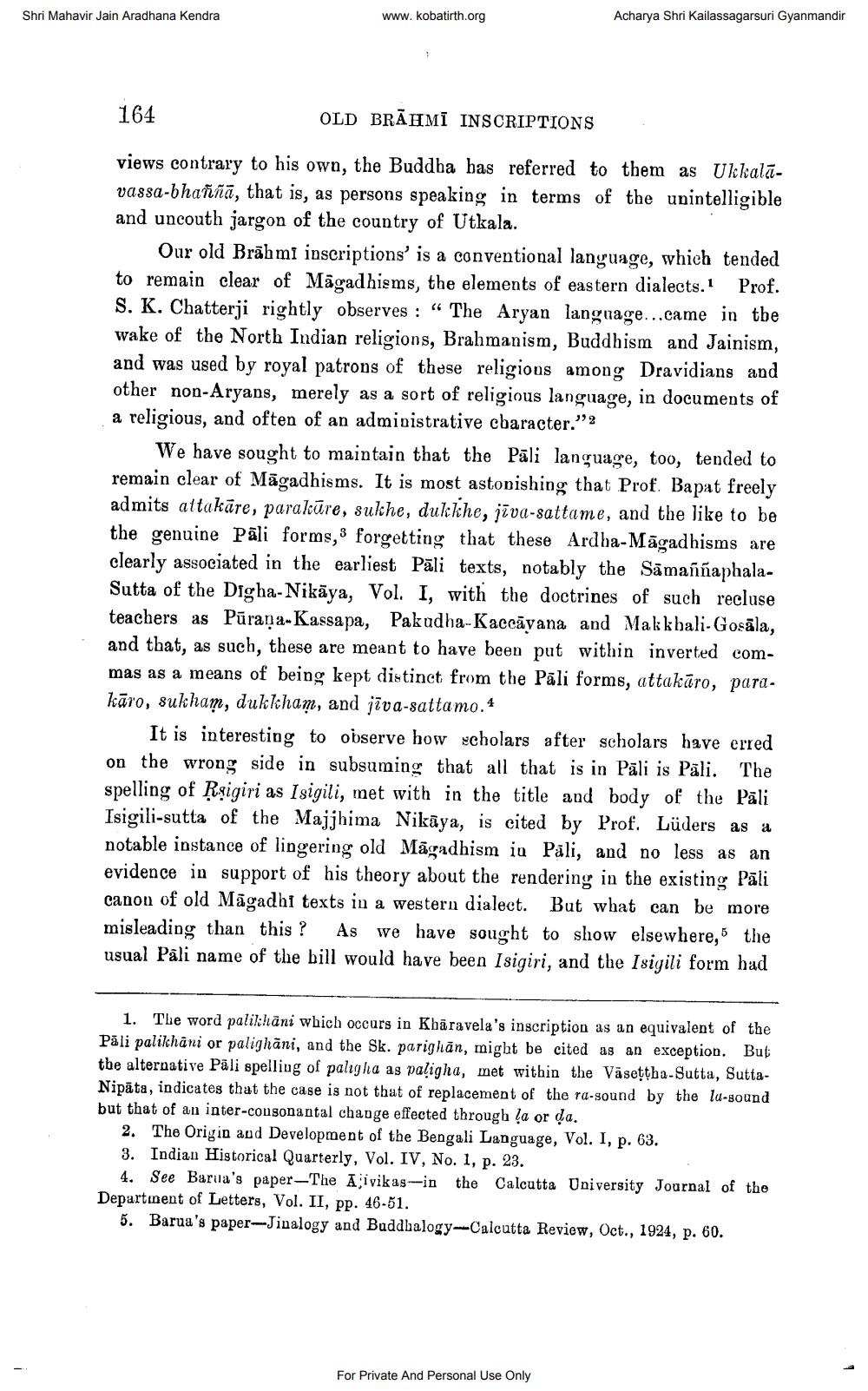________________
Shri Mahavir Jain Aradhana Kendra
www.kobatirth.org
164
OLD BRAHMI INSCRIPTIONS
views contrary to his own, the Buddha has referred to them as Ukkalavassa-bhañña, that is, as persons speaking in terms of the unintelligible and uncouth jargon of the country of Utkala.
Acharya Shri Kailassagarsuri Gyanmandir
Prof.
Our old Brahmi inscriptions' is a conventional language, which tended to remain clear of Magadhisms, the elements of eastern dialects.1 S. K. Chatterji rightly observes: "The Aryan language...came in the wake of the North Indian religions, Brahmanism, Buddhism and Jainism, and was used by royal patrons of these religions among Dravidians and other non-Aryans, merely as a sort of religious language, in documents of a religious, and often of an administrative character."2
3
We have sought to maintain that the Pali language, too, tended to remain clear of Magadhisms. It is most astonishing that Prof. Bapat freely admits attakare, parakūre, sukhe, dukkhe, jīva-sattame, and the like to be the genuine Pali forms, forgetting that these Ardha-Magadhisms are clearly associated in the earliest Pali texts, notably the SamaññaphalaSutta of the Digha-Nikaya, Vol. I, with the doctrines of such recluse teachers as Pūraṇa-Kassapa, Pakudha-Kaccayana and Makkhali-Gosāla, and that, as such, these are meant to have been put within inverted commas as a means of being kept distinct from the Pali forms, attakaro, parakaro, sukham, dukkham, and jiva-sattamo.1
It is interesting to observe how scholars after scholars have erred on the wrong side in subsuming that all that is in Pali is Pāli. The spelling of Raigiri as Isigili, met with in the title and body of the Pali Isigili-sutta of the Majjhima Nikaya, is cited by Prof. Lüders as a notable instance of lingering old Magadhism in Pali, and no less as an evidence in support of his theory about the rendering in the existing Pali canon of old Magadhi texts in a western dialect. But what can be more misleading than this? As we have sought to show elsewhere, the usual Pâli name of the hill would have been Isigiri, and the Isigili form had
1. The word palikhani which occurs in Kharavela's inscription as an equivalent of the Pāli palikhani or palighani, and the Sk. parighan, might be cited as an exception. But the alternative Pali spelling of paligha as paligha, met within the Vaseṭṭha-Sutta, SuttaNipata, indicates that the case is not that of replacement of the ra-sound by the la-sound but that of an inter-consonantal change effected through la or da.
2. The Origin and Development of the Bengali Language, Vol. I, p. 63.
3. Indian Historical Quarterly, Vol. IV, No. 1, p. 23.
4. See Barua's paper-The Ajivikas-in the Calcutta University Journal of the Department of Letters, Vol. II, pp. 46-51.
5. Barua's paper-Jinalogy and Buddhalogy-Calcutta Review, Oct., 1924, p. 60.
For Private And Personal Use Only




